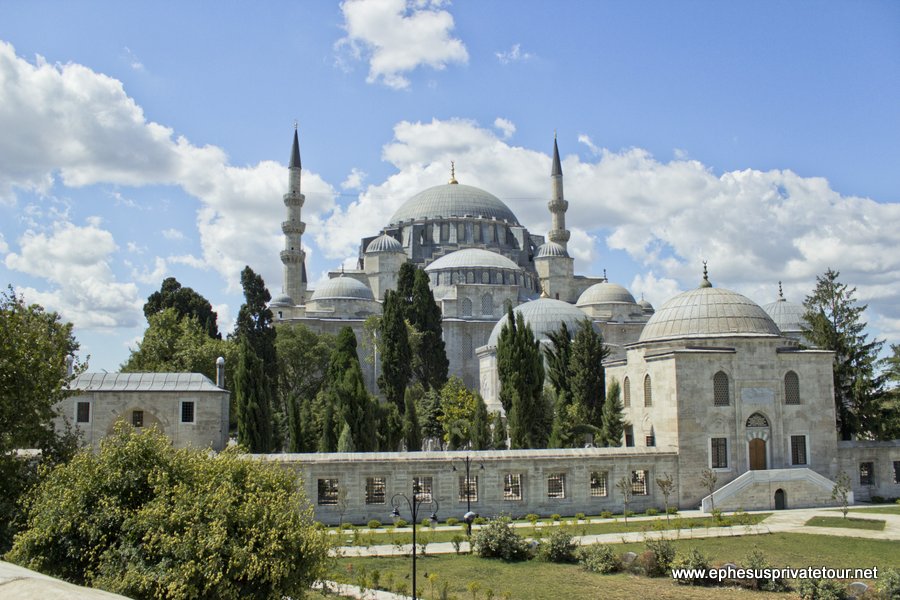SULEYMANIYE MOSQUE
Suleymaniye, rather than a mosque, is an important historical symbol for the Turks. It unites Sinan with Suleyman, one representing the best of the arts and the other most powerful of political strength.
Like other works of the time, Suleymaniye is not only a mosque but a huge complex. It is a work which typifies the Ottoman Empire at its peak. Its name, Suleymaniye, derives from the builder’s name, Kanuni Sultan Suleyman (Lawgiver), Sultan Suleyman I the Magnificent. The architect was the greatest of Ottoman architects, the incomparable Sinan.
The Suleymaniye mosque was built between 1550-1557. A spacious courtyard surrounds the mosque. Similar to the Sultan Ahmet Mosque, there is another inner courtyard surrounded by porticos with 28 domes supported by 24 columns. This courtyard is a little smaller than the main building. In the middle is located a sadirvan. In the four corners of the inner courtyard stand four minarets having a total of ten serefes.
The interior of the mosque is rectangular in plan, 61 m / 200 ft in width and 70 m / 230 ft in length. The main section is covered by a huge dome with a diameter of 27.5 m / 90 ft and a height of 47 m / 154 ft. The dome is held by four piers and supported by two semi-domes in the E and W. The transition to the main dome is provided by pendentives.
The acoustics were one of the distinctive features of the building which were achieved by placing 64 pots in different places in the walls and the floor. Except for those above the mihrab, the stained glass is not original. When the mosque was built there were 4,000 oil candles, the smoke from which could have endangered the paintings on the walls. The architect avoided this, however by creating a system for the circulation of air inside the building. Sultan Suleyman and Sinan are buried in their tombs in the Suleymaniye complex.
 Why Not Check Here do my english homework.
Why Not Check Here do my english homework.
